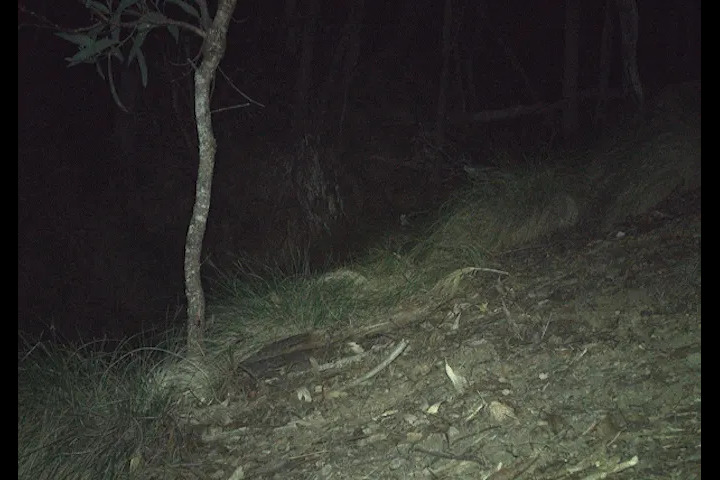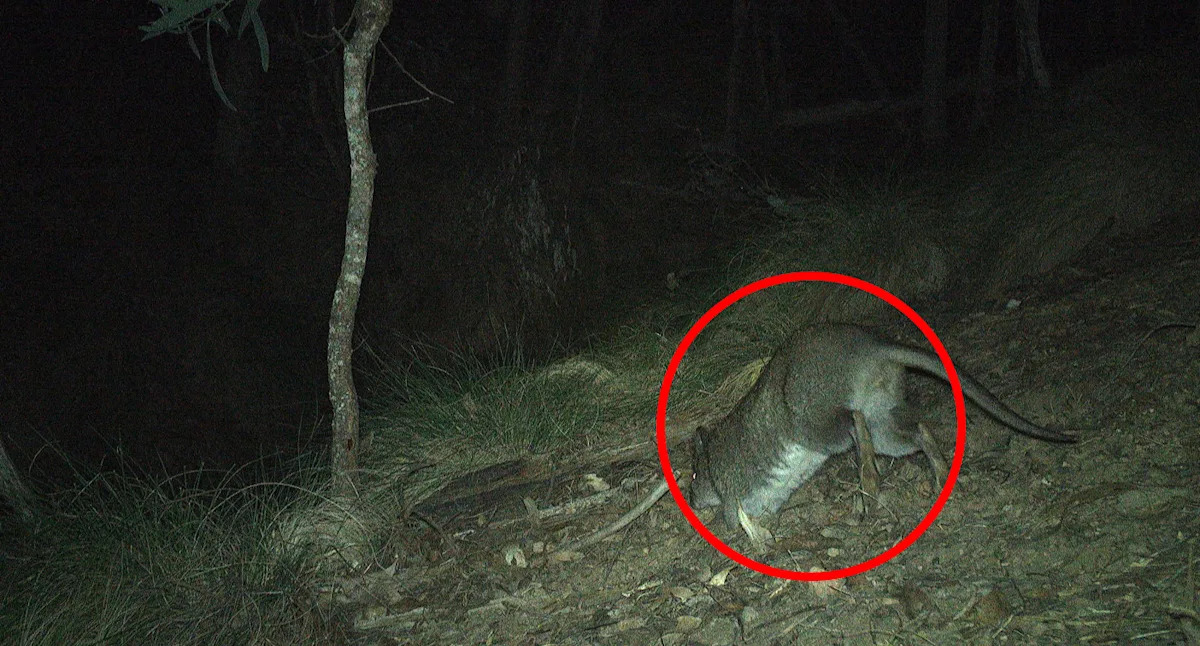Monitoring cameras set up in a remote corner of an Australian national park have captured something that hasn’t been seen since the 1990s, a long-footed potoroo.
Video shows the critically endangered marsupial moving through Kosciuszko for the first time. The only other place in NSW they’ve been recorded is north of Bondi State Forest, a wilderness that’s been heavily denuded near the Victoria border.
It comes after another rare species, the Leadbeater’s possum, was spotted on a Kosciuszko trail camera, a species that had never been seen alive in NSW.
The ordinarily shy, nocturnal, long-footed potoroo was spotted on cameras set up for invasive cat monitoring. They, along with feral horses, foxes, deer and pigs, have been degrading the rugged alpine landscape, making it difficult for native species to survive.
Related: ‘Locally extinct’ animals to roam again behind national park’s 25km predator-free fence

A long-footed potoroo in Kosciuszko National Park. Source: NPWS
Environment Minister Penny Sharpe said the discovery of the long-footed potoroo “highlights the importance” of invasive species control inside the national park.
“This important discovery of the long-footed potoroo is a promising sign for the long-term survival of this critically endangered species,” she said.
Her department (DCCEEW) will now consider how to best protect the long-footed potoroo and the Leadbeater’s possum, inside the national park, which could include changes to feral species and fire management.
Why is finding a long-footed potoroo so exciting?
There are fossil records of long-footed potoroos and Leadbeater’s possums in Kosciuszko, but it had been assumed both had been wiped out.
What’s particularly exciting about the potoroo is that they play an important role in the forest as ecosystem engineers.
Doug Mills, a senior ecologist at National Parks and Wildlife Service, told Yahoo News the discovery has left him feeling “pretty excited”. Specifically because wherever the species exists, it is one part of a three-way symbiotic relationship with eucalypts and fungi.
“Their diet is predominantly hypogeous fungi or truffles — underground fruiting bodies. When they consume them, they pass out the spores through the landscape, and aid in the spread of the fungi which doesn’t have any other means of distributing itself,” he said.
“And these fungal spores are important to assist in nutrient uptake for eucalypts.”
The potoroos get shelter from a healthy forest, the fungi gets spread, and the eucalypts get better nutrition.
While the long-nosed bandicoots that live in Kosciuszko were known to play a similar role, their diet doesn’t contain as much fungi, and so they would have less of an impact.
Mills said it would be an “important addition” to the national park, if there was another mid-sized marsupial living there.
“What we’re hoping to find out now is what does this new record mean? Is it an individual that wandered far, or is it actually part of a population? We’re a wee way from figuring that out, but it’s the central question of what we’re trying to acheive,” Mills said.
Local member Steve Whan called the discovery “thrilling” and some of the “most exciting conservation news” to come out of NSW.
“It’s becoming clear there is much we are still learning about the plants and animals that live in NSW, and it’s with a sense of pride that some of these discoveries are being made in our backyard,” he said.
The long-footed potoroo is listed as vulnerable to extinction on the International Union for Conservation of Nature (IUCN) Red List of threatened species. It estimates numbers at around 10,000, although some estimates suggest there could be as many as 50,000.
But the IUCN warns the population is decreasing, and the small 1.6kg animals are threatened primarily by changing fire regimes and foxes.
In Victoria, where most long-footed potoroos live, the species is listed as endangered.
Love Australia’s weird and wonderful environment? 🐊🦘😳 Get our new newsletter showcasing the week’s best stories.


